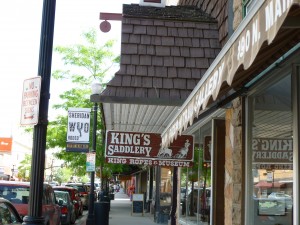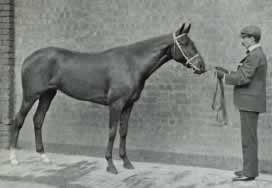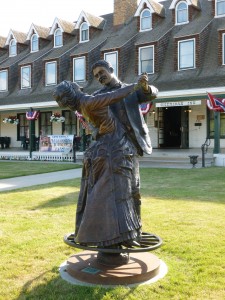Whoo-eee, y’all, it’s been a coon’s age and a year since we’ve had a Western Wednesday feature! I’m pleased to have Ms. Margaret Daley back ‘round the fire with the second book in her Men of the Texas Rangers series, SHATTERED SILENCE!
Once again, Ms. Daley tackles some of the toughest issues facing our society and packages it all within a fast-paced thrilling romantic suspense!
So come on ‘round the fire and make sure you read the excerpt from SHATTERED SILENCE and then read on to learn a bit about Margaret Daley in an interview she graciously provided!
 A serial killer is targeting illegal aliens in southern Texas. Texas Ranger Cody Jackson is paired with a local police officer, Liliana Rodriguez, to investigate the murders.
A serial killer is targeting illegal aliens in southern Texas. Texas Ranger Cody Jackson is paired with a local police officer, Liliana Rodriguez, to investigate the murders.
While the case brings Cody and Liliana ever closer, the tension between Americans and Mexican Americans heightens. As Cody and Liliana race to discover who is behind the murders and bring peace to the area, what they uncover isn’t what they expected. Will Cody and Liliana’s faith and love be strong enough to survive the storm of violence?
This book in the series (each book stands alone) is about bullying in various situations in society from high school to the workplace to a marriage.
KIRSTEN’S THOUGHTS: Margaret Daley’s MEN OF THE TEXAS RANGERS series just gets better and better. In SHATTERED SILENCE, Daley addresses bullying, domestic abuse, racism, workplace relationships, faith, love, forgiveness and redemption, and does it all while authorities race to find a serial killer in a small Texas town. Daley does a superb job of weaving all these facets together without the reader’s head spinning, or left feeling overwhelmed.
Liliana Rodriguez is a strong female detective, but in many ways is content hiding behind her job to avoid any romantic relationships. Her journey was touching to watch as she battles to find a serial killer and fights her own fears.
On the outside, Cody Jackson is confident and unshaken Texas Ranger, but inside he is battling his own insecurities and turmoil threatening his faith.
Both Liliana and Cody come across as real people in extraordinary circumstances forced to work through their own issues and trust each other and God before they can solve those things tearing their families and the town of Durango apart. I was drawn to each character from their first appearance on page. Once again, Daley created characters the reader really cared about, and could identify with and learn from.
The secondary characters were genuine, as well. Each representing a facet of our society and yet well rounded, and therefore avoiding becoming two-dimensional. Even the “villain” wasn’t a melodramatic caricature, but someone faced the same obstacles as others, but choosing to pay evil with evil. There were moments when the “villain” evoked as much sympathy as many of the other characters.
As always, Margaret does and exceptional job of weaving faith and the love of God through SHATTERED SILENCE, and using her characters as wonderful examples of what He can do for and with ordinary humans if we give everything to Him.
EXCERPT FROM SHATTERED SILENCE:
No one sees me. They walk right by me and don’t even know I am here. I’m invisible.
But that’s all going to change today. The woman who has agreed to marry me will be here soon. The world will finally know someone cares about me. It was worth all my savings to bring her across the border.
I’m tired of being alone. Being nobody. I’m getting married. I won’t be invisible anymore—at least she’ll see me.
* * *
Maria Martinez lay flat on the dust-covered wooden planks, her right eye pressed against the hole in the floor of the abandoned house. Pedro won’t find me here. I’ll win this time.
A sneeze welled up in Maria, and she fought to stop it. She couldn’t. Quickly she looked through the small opening to make sure Pedro hadn’t come and heard her. Her older brother always thought he could do everything better than her. Not this time. He’d never think to look here. He’d think she was too afraid to hide here. A rattling behind her sent a shot of fear through her. She went still. Her lungs held her breath and wouldn’t let go.
There’s no such thing as ghosts. He just told me that to scare me. I’m not a baby. I’m eight.
Her words fueled her courage, and she popped up to look over her shoulder. Nothing. Just the wind blowing through the broken window. Maria sank to the floor in relief and took up her post again. Watching through the hole. If Pedro came into the house, she’d be ready to hide. He was not going to find her. For once, she would have the last laugh. He was just two years older, but the way he acted, you’d think he was Papa.
Another sound caught her attention. Down below. Footsteps. She started to hop up and scramble to her hiding place nearby, but a gruff, deep male voice stopped her. Not Pedro. Who?
With her eye glued to the hole again, she waited to see who it was. Another voice—a woman’s—answered the man, then she laughed. A funny laugh—like Pedro when he made fun of her.
“Dumb. Evil eye,” the woman taunted in Spanish.
The man raised his voice, speaking in the same language so fast Maria had a hard time keeping up. Mama insisted on only speaking English at home. Now she wished she was better at Spanish. But she heard some words—the ones he slowed and emphasized, repeating several times in a louder voice a few cuss words that got Papa in trouble if he said them at home. The deep gruff voice ended with, “You will pay.”
The woman laughed again, but the sound died suddenly. “What are you doing?” she said in Spanish.
Maria strained to see the two people. The lady moved into her line of sight as she stepped back, shaking her head, her long brown hair swirling in the air. Maria glimpsed the top of a tan cowboy hat that hid the man’s face from her.
The beautiful lady held up her hands. “No!”
The fear in that one word chilled Maria.
Before she could think of what to do, a gunshot, like she’d heard on TV, blasted the quiet. The lady jerked back. She glanced down at her chest, then up, remaining upright for a few heartbeats before crumbling to the floor.
Maria froze. Her mind blanked.
The man came closer to the still lady on the floor, her unseeing dark eyes staring right at Maria, pinning her against the wooden planks. She saw the gun as he lifted his arm and aimed it at the woman. He shot her in the stomach then the forehead.
Maria gasped.
The man must have whirled away. Suddenly he wasn’t in her line of vision. She bolted to her feet as the sound of heavy footsteps coming up the stairs echoed down the hallway.
Terror locked a vise about Maria and held her in place.
INTERVIEW WITH MARGARET DALEY:
Can you tell us a little bit about yourself?
I have been writing for thirty-four years and sold my first book in 1981 in the secular market. After twenty books, I was introduced to the Christian market by the Lord, who gave me a story I could only tell with a faith thread in it. I have gone on to sell sixty-three books since that happened in 2000.
I have been married for forty-two years to Mike and we have one son Shaun and four granddaughters from ages 3-12. I also have three cats that adopted us and think they rule the household. Don’t tell them but they probably do.
When did you first discover that you loved writing?
I’ve always been a storyteller since I was a little girl. I never wrote those stories down, but after reading many books, I decided to try to write one. Since that first book, I’ve been continually writing–all with a romance thread in the story.
Why do you write the type of books that you do?
The first books I remember reading and really enjoying were the books in the Nancy Drew series. From there I grew to love suspense and adventure (usually with a love interest). I wanted to write what I enjoyed to read the most.
Has writing changed your life in any way?
I taught special education for 27 years before I retired to write full-time. My writing allowed me to do that and not go crazy. I have to have something to do. I couldn’t just retire and have nothing to do. My writing also allowed me to research a lot of different topics and visit many different places.
What Bible scripture has impacted your life the most?
I love the 23rd Psalm and what it tells us. God is with us through the worst. That is comforting to know.
What’s one of your favorite books you’ve read?
Amazonia by James Rollins (secular–pure suspense/adventure)
What’s the funniest thing you’ve ever done?
I once came out of a bathroom with toilet paper hanging out of my waistband of my pants. I turned ten shades of red.
Bio for Margaret Daley:
Margaret Daley, an award-winning author of eighty-three books, has been married for over forty years and is a firm believer in romance and love. When she isn’t traveling, she’s writing love stories, often with a suspense thread and corralling her three cats that think they rule her household. To find out more about Margaret visit her website at http://www.margaretdaley.com.
Where can readers learn more information about you?
I love hearing from readers.
Website: http://www.margaretdaley.com
Blog: http://www.margaretdaley.com/margarets-blog/
Twitter: https://twitter.com/margaretdaley
Facebook: https://www.facebook.com/margaretdaleybooks
 Born in Douglas, Wyoming, in 1923, Don King was the son of an itinerant ranch hand, Archie King. By the age of 14, Don learned to tool leather as he supported himself with odd jobs at ranches and rodeos. He sold and traded wallets, belts and other small gear. “I traded for pants, shirts, hats, spurs, anything. Sometimes I ended up with nothing.”
Born in Douglas, Wyoming, in 1923, Don King was the son of an itinerant ranch hand, Archie King. By the age of 14, Don learned to tool leather as he supported himself with odd jobs at ranches and rodeos. He sold and traded wallets, belts and other small gear. “I traded for pants, shirts, hats, spurs, anything. Sometimes I ended up with nothing.”















